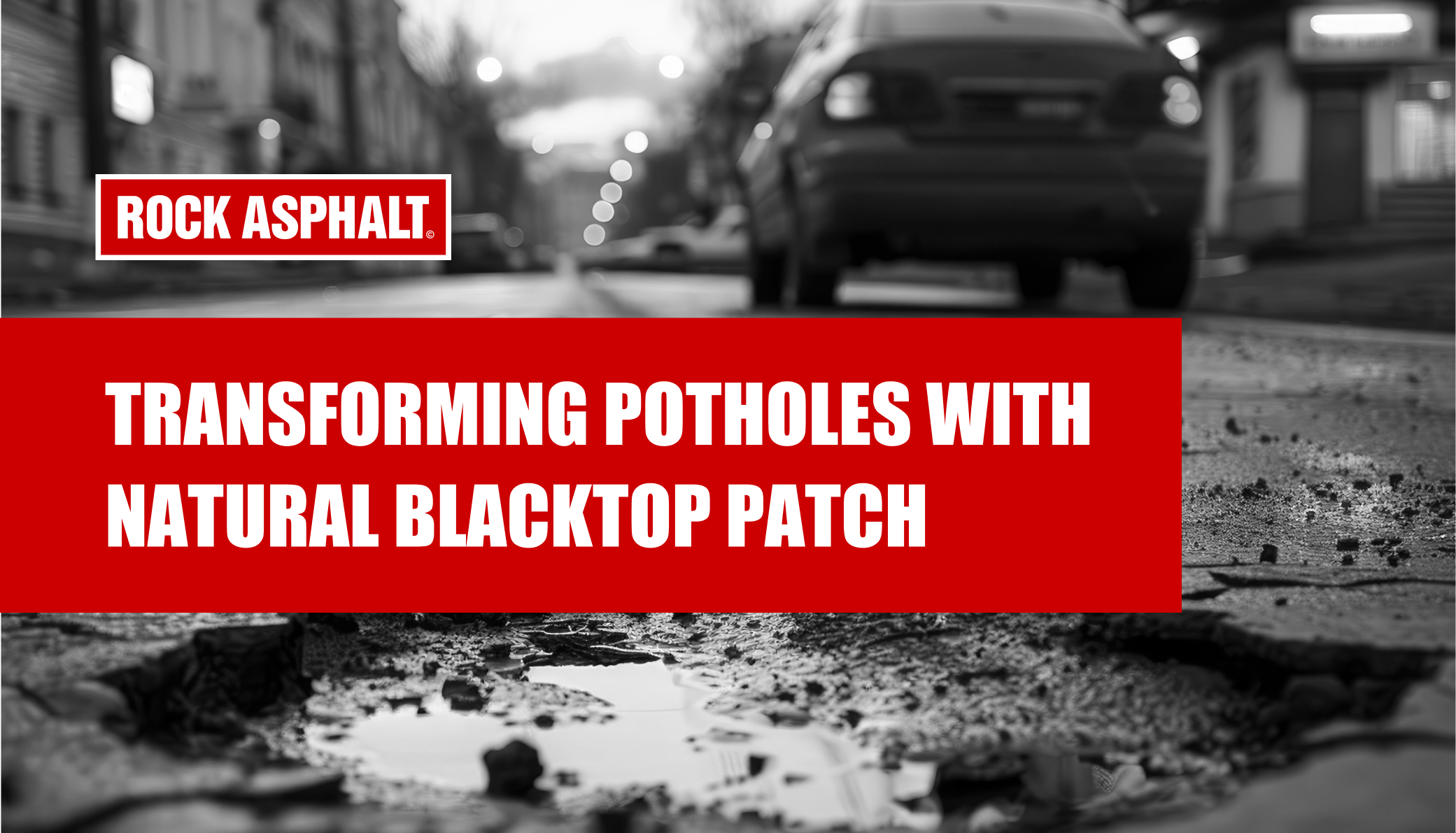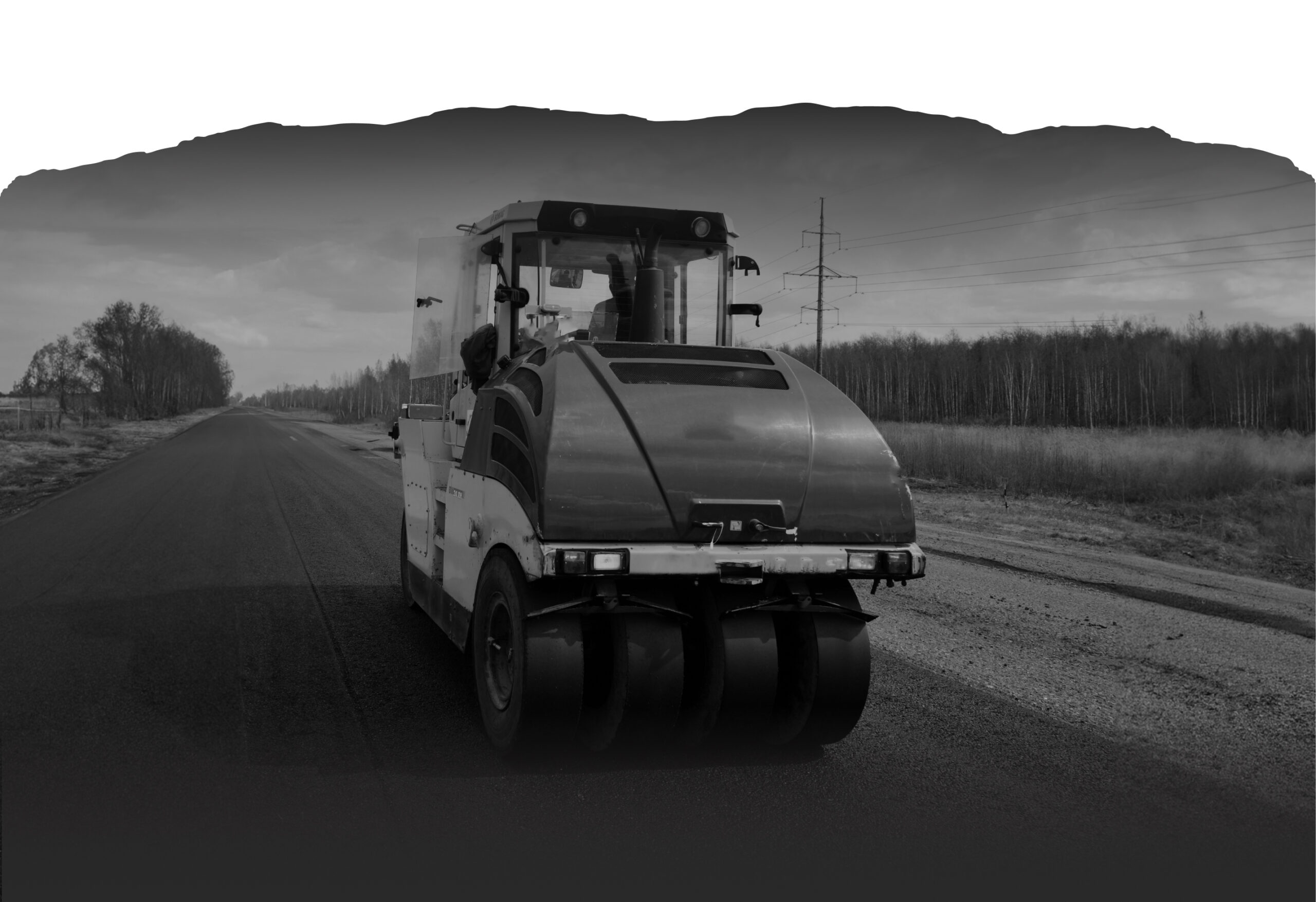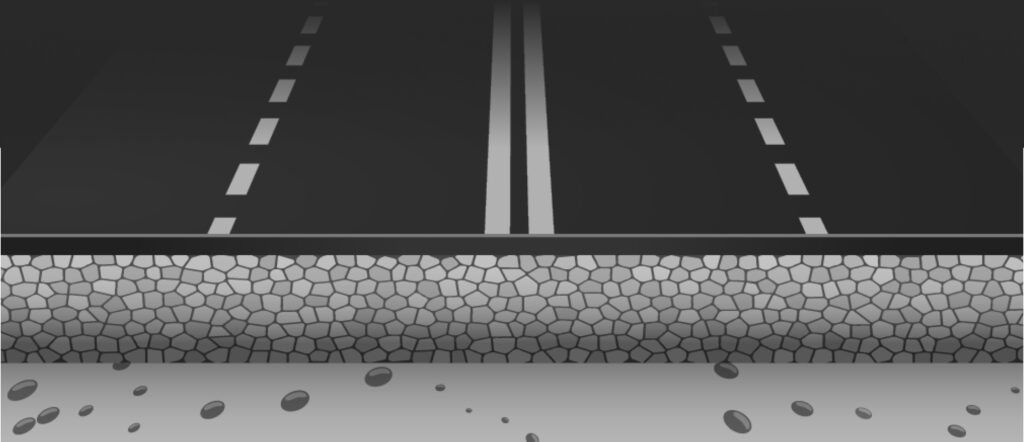Transforming Potholes With Natural Blacktop Patch

When it comes to blacktop maintenance, addressing potholes is crucial for safe and smooth
travel. However, efficient and lasting repairs can prove challenging to achieve with
manufactured or “traditional” blacktop patches. While patching potholes with manufactured
blacktop has become the norm, it is often a time-consuming and labor-intensive process. It’s
also not uncommon for these patches to fail due to the limitations of the material.
Natural blacktop patch offers an efficient approach to potholes by reducing the time and effort
needed for effective repairs. Additionally, this natural material provides a solution to one of the
most problematic issues surrounding pothole repairs – failed patches.
Ultimately, choosing between the two methods of pothole repair will depend on the specific
needs and priorities of the project at hand. In this blog, we’ll compare traditional and natural
blacktop patches while considering the process, pros, and cons of each method.
The Traditional Process of Pothole Repairs Using Blacktop Patch
While pothole repairs with blacktop patch vary depending on the mixture, the process remains
the same. Before road crews are dispatched for repairs, inspections are performed on
necessary machinery such as asphalt compactors, utility vehicles, shovels, and rakes to ensure
they are in optimal working condition. Supplies including blacktop patch, safety cones, and
signage are stocked up and loaded onto the vehicles.
Once at the location, traffic is sectioned off while a portion of the crew clean and prep the
distressed area. A tack coat is sometimes applied to help the blacktop patch stick to the sides of
the pothole. Some mixtures require the edges of the pothole to be squared off with a concrete
saw for the material to bond.
The crew fills the pothole with a blacktop patch, using shovels to spread and compact the
material evenly before it is compacted. For compaction, vibratory plate compactors or hand
tampers are used. Once the repair is complete, traffic control measures are maintained until the
patch has hardened sufficiently to withstand traffic. This can take anywhere from a few minutes
to a few days depending on the material.
Pros of Traditional Blacktop Repair
- The traditional process of blacktop patching has been used for decades, making this
technique both familiar and commonplace for most road crews. Departments responsible for road maintenance are equipped with both the necessary equipment and know-how to accomplish this method on a regular basis. - Blacktop patching materials are readily available and come in a variety of mixtures for
different applications. Local mixing plants offer bulk, while large box stores carry a variety of
bagged options. From crack fillers to temperature-specific cold mix, finding the right mixture for
your job’s specifications is easily attainable. - Road work can quickly become expensive, but blacktop patching materials can be very
affordable. With some cold mixes as low as $90 per ton, blacktop patch can be purchased in
bulk for large-scale repairs while remaining within tight budget constraints.
Cons of Traditional Blacktop Repair
- The process can be time-consuming and limit a road crew’s efficiency. Normally, road crews
are dispatched to perform blacktop maintenance as a single unit. Crew members each have
their own responsibility in the process from cleaning to compacting. This limits the reach of the
crew, as they are forced to remain together until each repair is complete. - Traditional blacktop patching can also be labor-intensive. Technicians and specialized
equipment such as concrete saws and vibratory plate compactors are needed for application.
Additionally, blacktop patches are notoriously messy and can lead to hours of necessary
cleaning of equipment and machinery. - Many blacktop patches aren’t designed for permanent repairs, making failed patches and
rework common. These materials lack the durability required to handle high-traffic areas where
vehicles constantly stress the patch. These patches also tend to shrink and crack when
exposed to temperature fluctuations. Poor compaction during installation can also contribute to
the failure, as it leads to voids within the patch where water can infiltrate and cause further
damage. These combined factors result in the need for repeated repairs.
Effective Pothole Repairs Using Natural Blacktop Patch
Repairing potholes with a natural blacktop patch looks quite different than the traditional
process of patching with manufactured materials. However, while this method may seem
unconventional, it also minimizes labor and equipment costs, provides permanent results,
and is accessible for road crews of all sizes.
Natural blacktop patches such as RockAsphalt© rely solely on compaction to create a bond and
do not require specialized equipment or training. Where entire crews are typically required to tackle a single pothole
as a unit, with RockAsphalt©, crews can disperse and easily tackle multiple potholes on their
own.
Using this method, crews only need rudimentary tools such as shovels and rakes for cleaning
the potholes and a utility vehicle for compaction. There is no need to square the edges of the
pothole or apply a tack coat, significantly reducing the time and effort needed for repairs. After
cleaning and prepping the area, crews fill the pothole with RockAsphalt©, utilizing the pressure
from a vehicle’s tire for compaction. While larger repairs such as utility cuts require the use of a
pneumatic roller, vehicles work perfectly well for potholes of any size.
Pros of Natural Blacktop Patch
- Using RockAsphalt© greatly reduces the amount of time required to repair potholes, with
most repairs taking minutes to complete. This is largely due to the minimal prep and effort
required to use the material. Whereas manufactured blacktop patches mostly rely on chemical
reactions to form a bond, natural blacktop patches, such as RockAsphalt© create a bond
immediately on compaction. This means distressed areas can be reopened as soon as the
repair is complete. - The unique composition of natural blacktop also minimizes the labor required to patch
potholes. No special tools, training, or equipment are required. Because bitumen is released
once the material is compacted, there is no need to apply a tack coat or square the edges of the
pothole. This means even the smallest road crews are capable of large-scale, permanent
pothole repairs without investing in expensive paving equipment. - Most blacktop patches are used as a temporary solution to potholes when more permanent
materials are unavailable. RockAsphalt© is designed as a permanent pothole repair. This is
made possible because of the natural blacktop’s bond that prevents moisture from penetrating
the surface. Using this method, potholes can be patched permanently in inclement weather and
withstand heavy traffic for years to come.
Cons of Natural Blacktop Patch
- ockAsphalt© is a natural blacktop patch designed for permanent pothole repair and is not
designed for filling cracks. Consequently, areas with severe cracking or “alligatoring” will have to
be completely removed for RockAsphalt© to work properly. - Vibratory plate compactors are not recommended due to the varying grades of aggregate that
make up the material of RockAsphalt©. The smaller grade aggregates help fill small voids and
crevices during compaction. The use of a vibratory plate compactor will cause the smaller
aggregates to sink to the bottom of the repair, leaving those small voids and crevices unfilled on
the top layers. Additionally, hand tampers are not recommended. Since RockAsphalt© binds on compaction, it
is best to apply as much force as possible. Using a vehicle tire or pneumatic roller
will allow you to achieve the best results. - When compared to most bulk blacktop, RockAsphalt© is a more expensive material.
However, while this natural blacktop patch costs more, it also saves money in the long-term
because of its permanence. While repairs made with bulk blacktop patches may appear cheap,
countless re-repairs can cause a single pothole to cost thousands. Additionally, RockAsphalt©
comes with a 3-year guarantee that protects against failed patches.
Conclusion
Ultimately, traditional blacktop patching is the standard method that’s been used by countless
road departments for decades. The material is readily accessible, and the process is well
known. However, it can also make repairing potholes time-consuming, labor-intensive, and lead
to failed patches and rework. Natural blacktop patches like RockAsphalt© transforms the
process into a simplistic, cost-effective, and efficient solution with permanent results.
Go to topGo to bottom

Ready to do road repairs the fast & easy way?
RockAsphalt© replaces cold and hot mix making road repair of all sizes fast, clean, simple and permanent the first time.
Try it for yourself and learn why crews love it.
Get your free sample bags and have your team see how fast and easy it is to permanently fix potholes.


